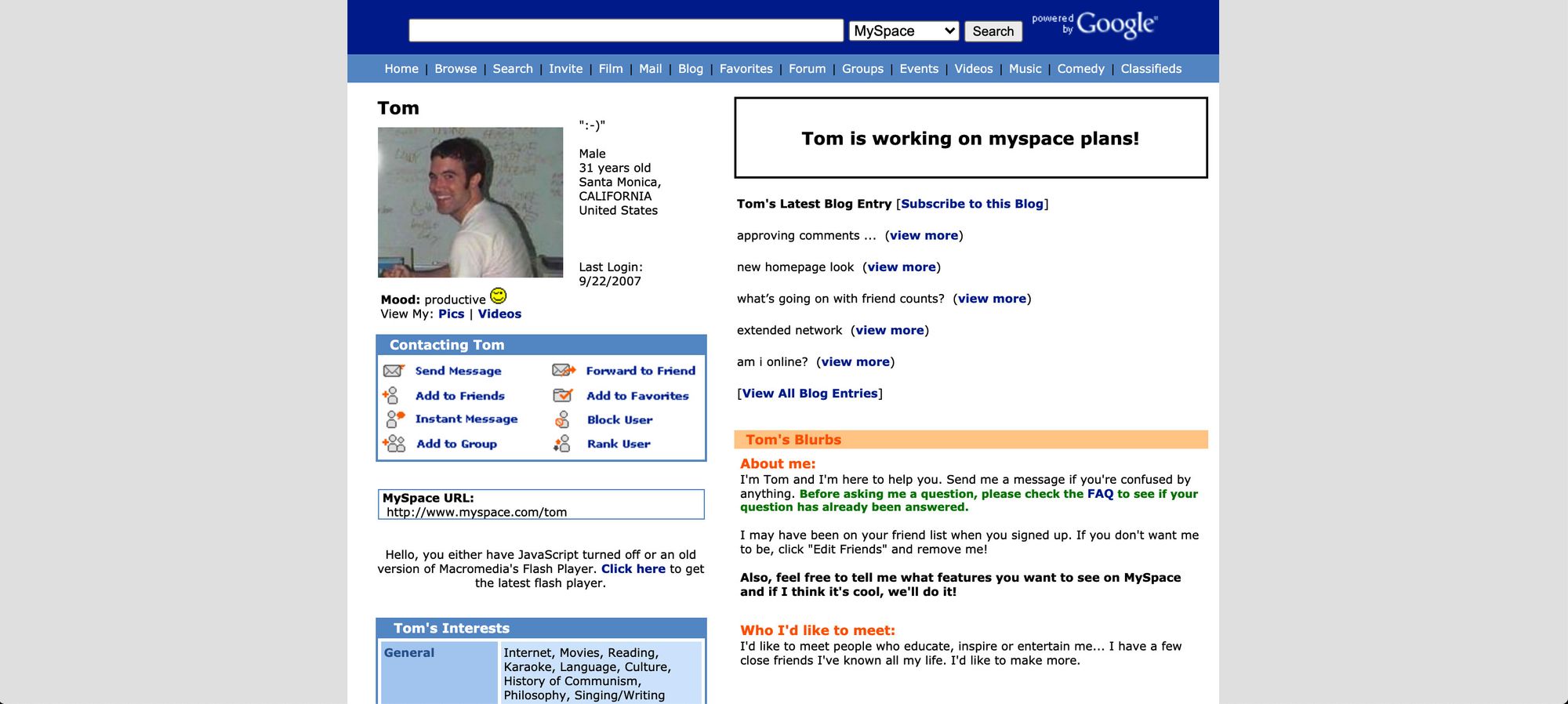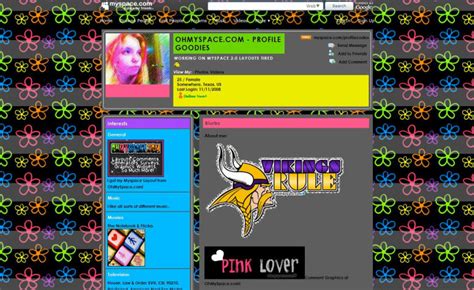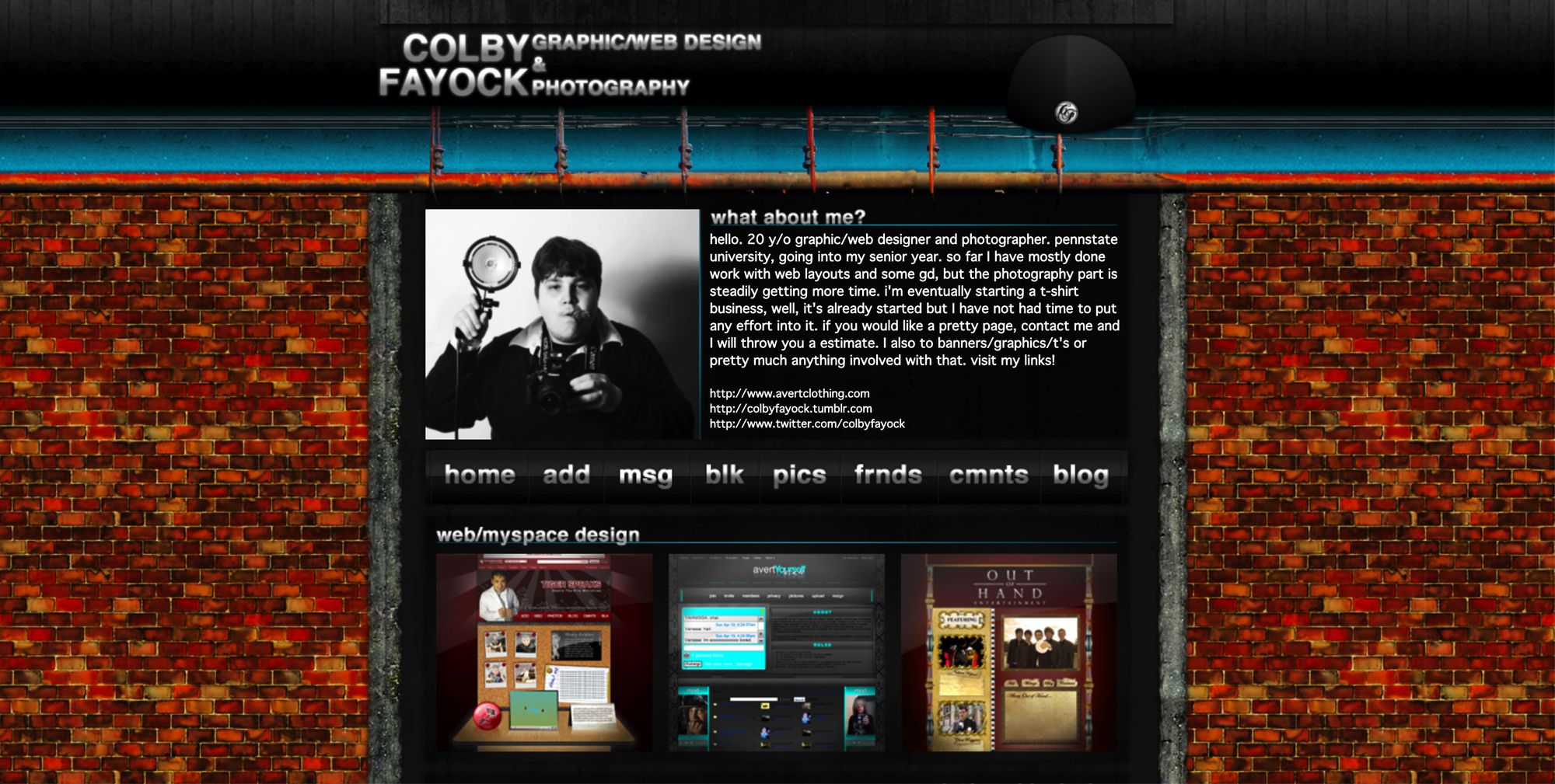Pen's Blog
The Death of Creativity on the Web
Jun 27, 2024
The web grows blander and blander by day. There was once a time when it was really a place to express yourself, to put out your sheer, raw personality into the open web. Now, you might think that I'm being a bit silly. That I'm idealizing a time I never lived in. However, I think that by the time you've finished reading this article, you'll agree with me.
Part 1: Losing the Ability to Customize.
Case Study 1: MySpace
Do people even know about MySpace? I feel like most of my generation only knows about MySpace in the context of it being an early social media site. Nobody actually knows what it was like. I mean, I can't really speak to that either. I've never used MySpace. I'm going to show you a few images from the site.



No, you're not hallucinating, these are all from the same website. Confused? You would be, if you've only seen the modern web. Nowadays, the only things you're allowed to customize on your social media profiles are your icon and a dinky little banner. It used to be different, though. They used to let us get up in there and customize our profiles to our hearts content.
Case Study 2: Tumblr
Moving on to a slightly less irrelevant but still not very important website, it's Tumblr. You remember Tumblr. Even if those memories are just from biased Youtubers (*cough*, internet historian), you probably know about Tumblr. Well, it has a custom CSS feature too. Browsing Tumblr, you'd be confused, because dear god does the website not feature it. Just clicking on a blog won't show you the customized page, you have to specifically navigate to it. Custom themes aren't even enabled by default, you have to go through some cumbersome menus to get to it. Tumblr keeps the feature around, but they REALLY don't want you to know that they do. A casual Tumblr user will likely never encounter it. They've tried as hard to remove the featre as they can without actually removing it.
Case Study 3: Youtube
Our final case is Youtube itself. Youtube is the only thing we're looking at that hasn't become irrelevant. Youtube, much like some of our other case studies, had these custom pages once upon a time.



Note: JonTron being featured here isn't an endorsement of him, he's just one of the easier profiles to find the channel page of. We all know that he sucks.
Look at this. It wasn't always pretty, but it was ours. It was creative, and it was free. Youtube did what MySpace and Tumblr couldn't. It killed user customization, and because of that, it survived. At what cost, though. At what cost. Now, it's all gone. Replaced with sterile white or black, for the sake of a corporation's reputation.
Part 2: The Loss of Tools
Up to this point, I've covered the disappearence of the ability to customize. Obviously, this is a big part of my point that creativity is being stifled online. We've literally lost the ablitity to do certain things. That's a pretty big loss of creativity right there. However, now, I'm covering the lack of creative tools. Sure, a customizable social media page is great, but we don't need that, not really. We can just display our creativity through the content we make. As long as we have the tools for it, right? Right?
Case Study 4: Flash
Flash is a recent enough technology that I shouldn't have to explain it, but I will anyway. Adobe Flash is a multimedia platform that could be used to make animations, desktop and mobile apps, games, and applications. A ton of prominent stuff was made on Flash. However, the animated tv shows aren't what I care about. No, I care about the amateur. The student. Adobe Flash was the entry for game development and animation for an entire generation. It was accessible enough for amateurs, and robust enough for professionals. Flash was great.
Then, Flash was killed. A generation of creations was obliterated, and a generation of future creatives was stifled. I'm not going to lie, Flash DID have major security flaws. It could run scripts directly on the host PC when it loaded a website, allowing Flash to run bitcoin miners on unsuspecting users. However, that still doesn't excuse what happened to it. This was like the digital fire of alexandria. Adobe didn't care what happened to all that art, and they probably didn't even care about the security issues. They just didn't want to deal with the costs anymore. Their corporate viewpoint almost obliterated a generation of art.
All over the web, this is happening. Tools are getting harder or more costly to access, because when we were building the web, we let the corporations have a piece of the pie. The web is for everyone, and to those who benefit from corporations, corporations are people. Imagine the indie projects that could have been made if Adobe didn't rely on a money grubbing subscription model. We could have had 10 times the amazing, beloved art being created today, but now, we'll never know. We'll never know how much damage the rising costs of creation have done to our culture.
Part 3: Conclusion
What more is there to say; it's self evident. Who killed creativity on the web? The corporations did. Disney bought Club Penguin, and killed it after that. Adobe bought Flash to kill it later on. Social media implemented customizable pages, only to kill them to protect their reputations. After all, amateur art looks unproffesional, and the shareholders don't like that. Who cares if you're making being on the web a worse experience! As long as they can make money, they'll keep destroying art, they'll keep destroying tech, and as long as it remains profitable to do so, they'll keep doing it.
That's the crux of the issue. The goal of tech companies isn't to make tech better; it's to make money, and if the way to make the most money is to create an inhospitable internet, they'll do exactly that.